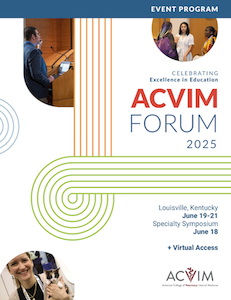Small Animal Internal Medicine
(R06) Soft Palate Defects as a Cause of Chronic Nasal Signs in 3 Cats
Thursday, June 19, 2025
6:15 PM - 6:30 PM ET
Location: Exhibit Hall Poster Park - Kiosk 4

Jennifer C. Weng, DVM, BS (she/her/hers)
Small Animal Internal Medicine Resident
Colorado State University
Fort collins, CO, United States
Research Abstract - ePoster Presenter(s)
Abstract: Background – Chronic nasal discharges are common in cats and when the character of the nasal discharges is mucopurulent in appearance, infectious etiologies are often suspected. Frequently, antibiotics or anti-viral therapies are prescribed empirically without a complete diagnostic workup. Hypothesis/Objectives – To describe 3 cases of chronic nasal signs that resulted from unusual defects of the soft palate in otherwise healthy cats. Animals – Three client-owned cats with chronic nasal signs. Methods – Case Series. Clinical and medical records evaluation of the 3 clinical cases. Results – Three young cats (age, 4 months to 3 years) were initially suspected of having community acquired bacterial or viral infection leading to mucopurulent nasal discharges and intermittent sneezing. Several antibiotics and anti-viral therapies failed to control clinical signs, so referral to a veterinary specialty hospital was recommended. No abnormalities were noted on awake oral examinations but after induction of anesthesia, defects within the soft palate (5x5mm penetrating defect through the soft palate; 5cm penetrating defect through the soft palate; 1.5cm congenital midline cleft palate extending the entire soft palate) were appreciated. Surgical repair resulted in significant improvement to resolution of clinical signs. Conclusions and Clinical Importance – These 3 cases emphasize that a sedated oropharyngeal examination should be performed early in the clinical evaluation of young cats to detect palatal and other abnormalities before attempting multiple antibiotic or antiviral trials for the treatment of nasal signs.



